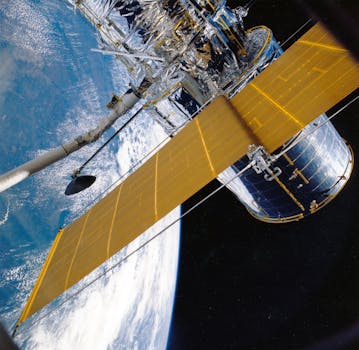The Future of Connectivity: Latest Breakthroughs in Satellite Telecommunications

The Future of Connectivity: Latest Breakthroughs in Satellite Telecommunications
The Future of Connectivity: Latest Breakthroughs in Satellite Telecommunications is revolutionizing the way we communicate and access information. With the increasing demand for global connectivity, satellite telecommunications has become a vital component of modern communication systems. In this article, we will explore the latest breakthroughs in satellite telecommunications and their impact on the future of connectivity.
Satellite telecommunications has come a long way since its inception. The first commercial satellite, Intelsat 1, was launched in 1965, marking the beginning of a new era in global communication. Since then, satellite technology has advanced significantly, with improvements in signal strength, bandwidth, and transmission speed. Today, satellite telecommunications plays a critical role in providing connectivity to remote and underserved areas, where traditional communication infrastructure is limited or non-existent.
Advancements in Satellite Technology

Recent advancements in satellite technology have enabled the development of more efficient and cost-effective satellite systems. One of the significant breakthroughs is the introduction of high-throughput satellites (HTS), which offer higher bandwidth and faster data transfer rates. HTS satellites use advanced technologies such as spot beams and frequency reuse to increase capacity and reduce costs. This has led to a significant reduction in the cost of satellite bandwidth, making it more accessible to a wider range of users.
Another significant advancement is the development of low-Earth orbit (LEO) satellites. LEO satellites operate at an altitude of around 1,200 kilometers, which is much lower than traditional geostationary satellites. This lower altitude reduces latency and enables faster data transfer rates, making LEO satellites ideal for real-time applications such as video conferencing and online gaming.
Impact on Global Communication

The latest breakthroughs in satellite telecommunications are having a profound impact on global communication. Satellite connectivity is enabling people in remote and underserved areas to access the internet, communicate with others, and access essential services such as healthcare and education. This is particularly significant in developing countries, where traditional communication infrastructure is often limited or non-existent.
Satellite telecommunications is also playing a critical role in disaster response and recovery. During natural disasters such as hurricanes, earthquakes, and tsunamis, satellite connectivity can provide a vital lifeline for emergency responders and affected communities. Satellite communications can enable the coordination of relief efforts, the provision of critical services, and the dissemination of vital information to affected communities.
Opportunities and Challenges

The future of connectivity in satellite telecommunications presents numerous opportunities for businesses and individuals alike. With the increasing demand for global connectivity, satellite telecommunications is expected to play a critical role in providing connectivity to remote and underserved areas. This presents opportunities for satellite operators, equipment manufacturers, and service providers to develop new technologies and services that meet the growing demand for satellite connectivity.
However, there are also significant challenges that need to be addressed. One of the major challenges is the issue of space debris, which poses a significant risk to satellite operations and the environment. The increasing number of satellites in orbit is also raising concerns about congestion and interference, which can impact the performance and reliability of satellite communications.
In conclusion, the future of connectivity in satellite telecommunications is exciting and rapidly evolving. The latest breakthroughs in satellite technology are enabling the development of more efficient and cost-effective satellite systems, which are having a profound impact on global communication. As the demand for global connectivity continues to grow, satellite telecommunications is expected to play a critical role in providing connectivity to remote and underserved areas, and presenting opportunities for businesses and individuals alike.
See more:





